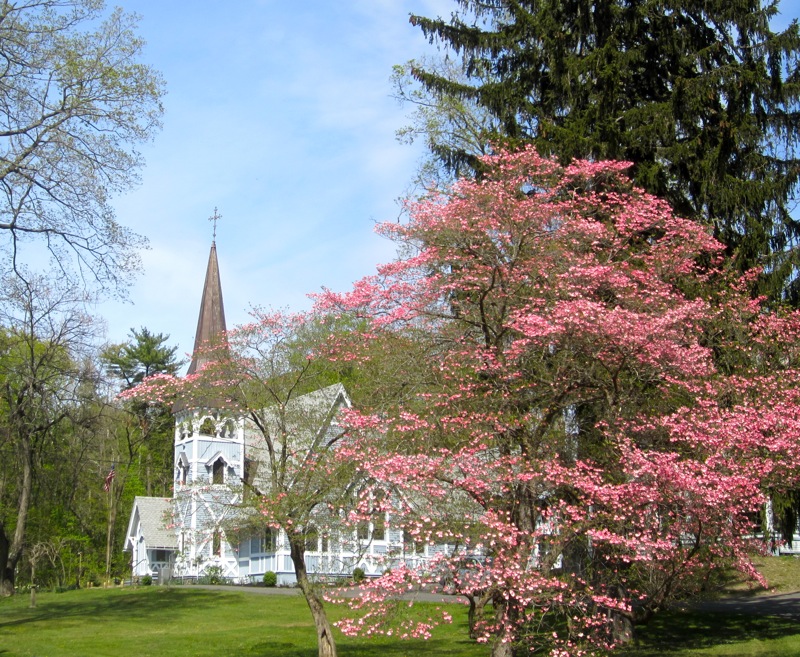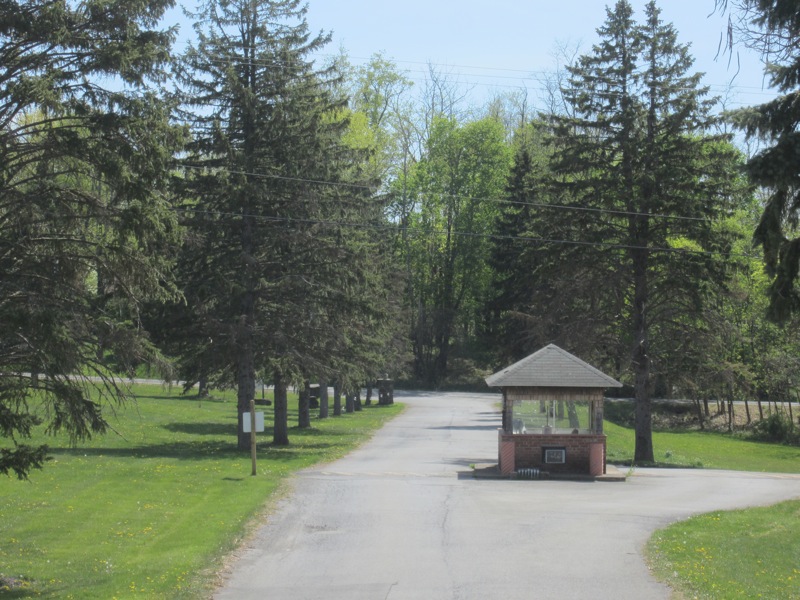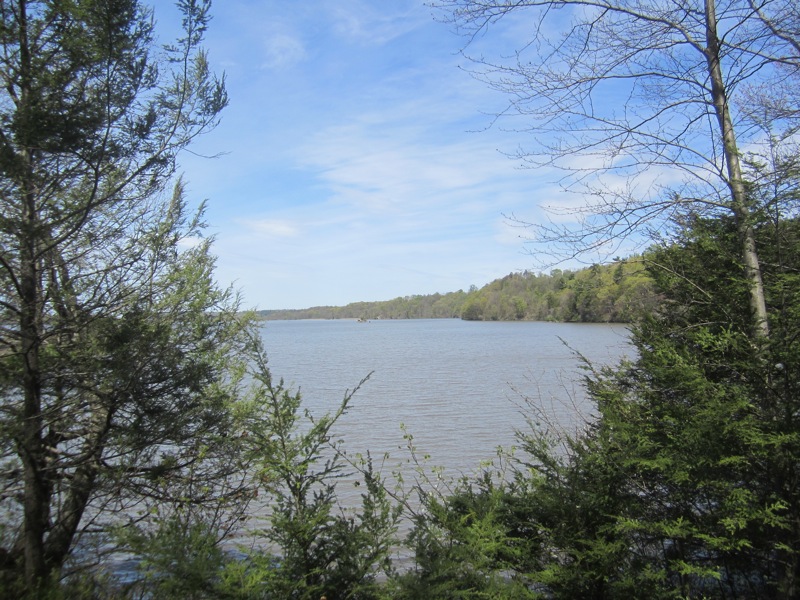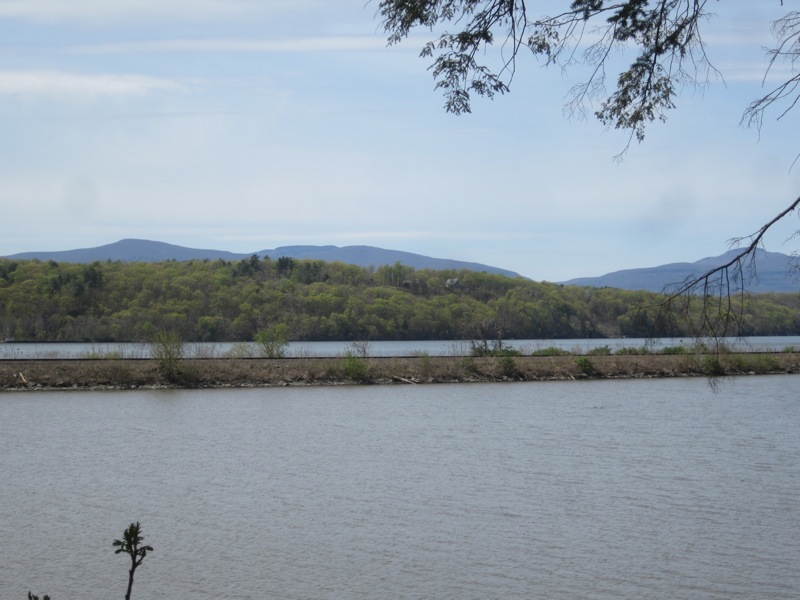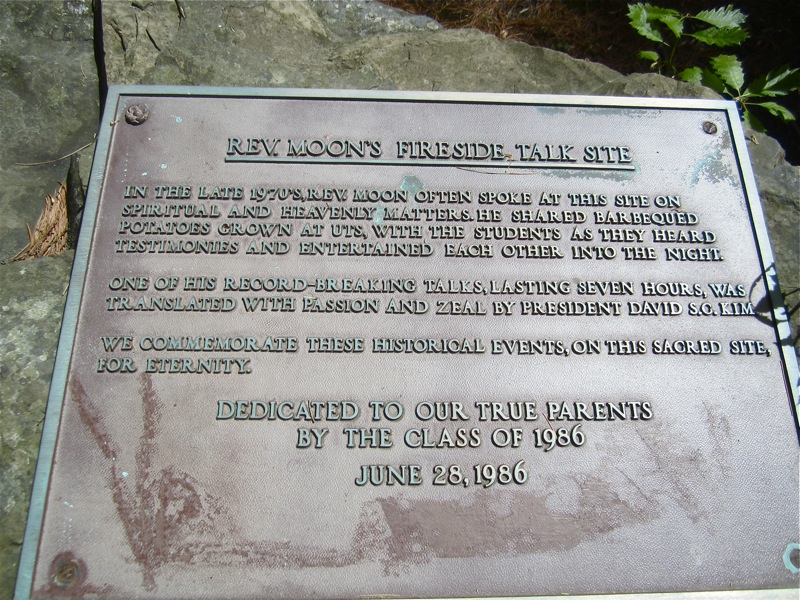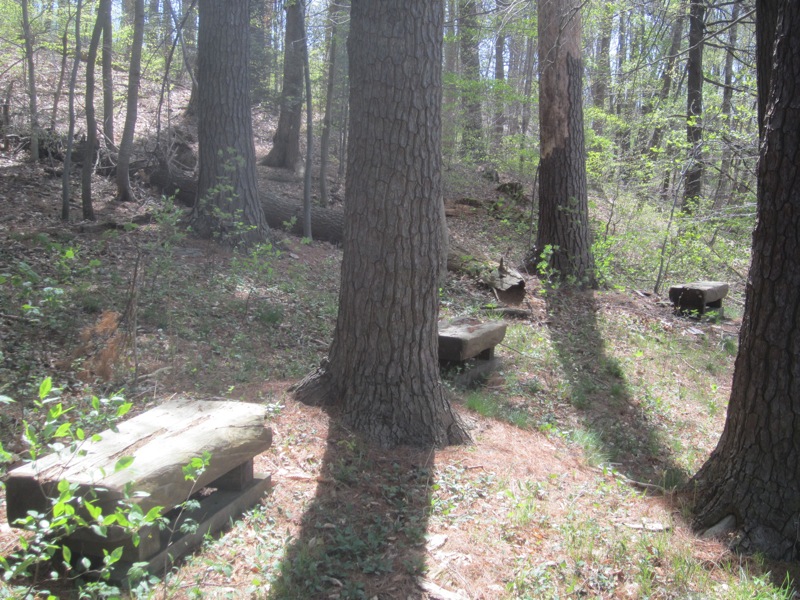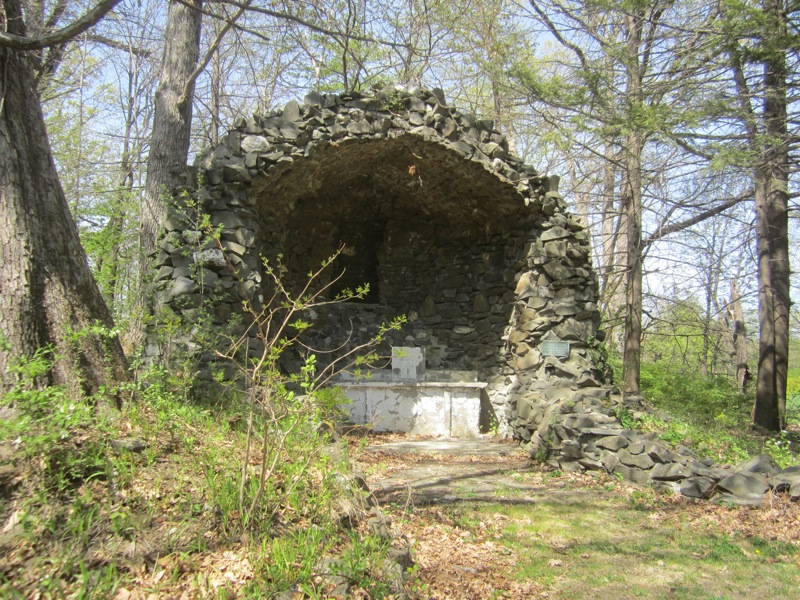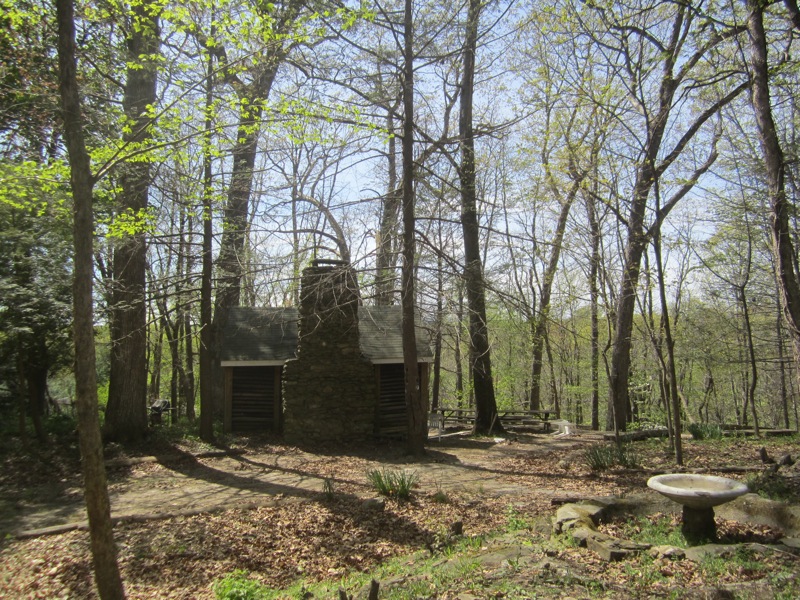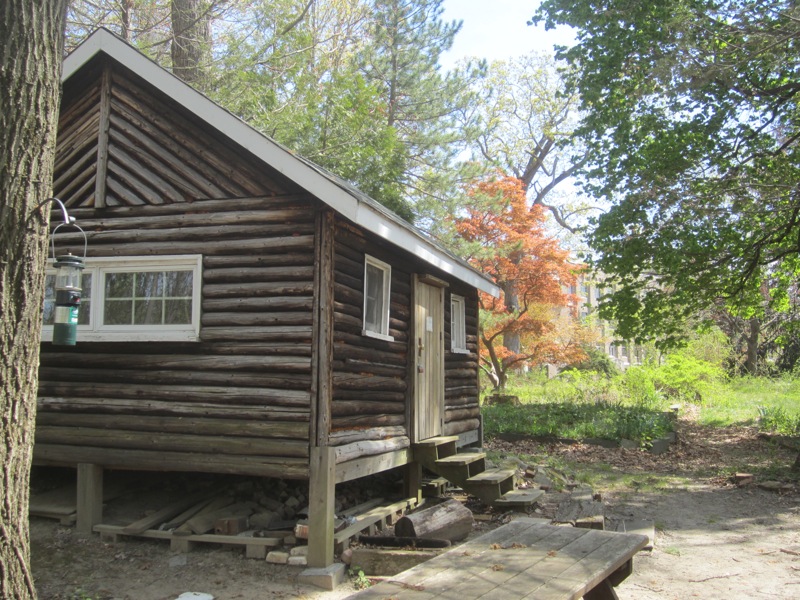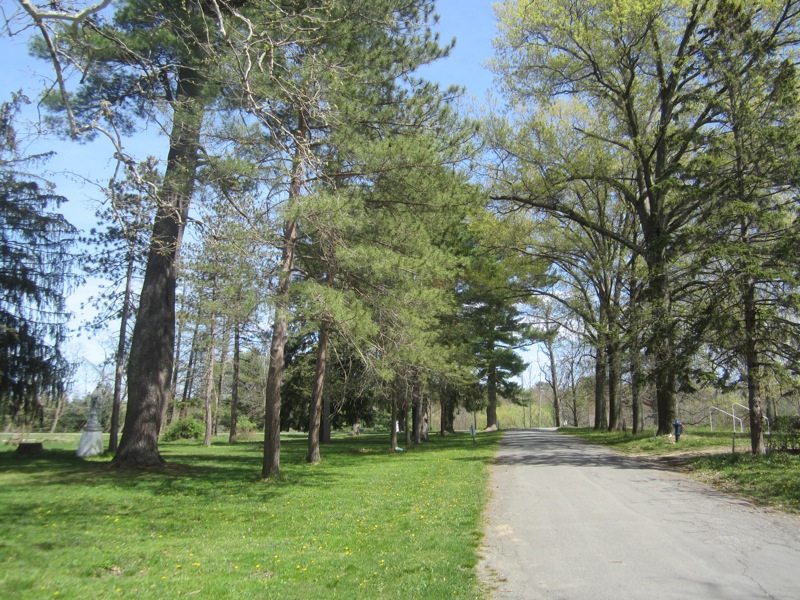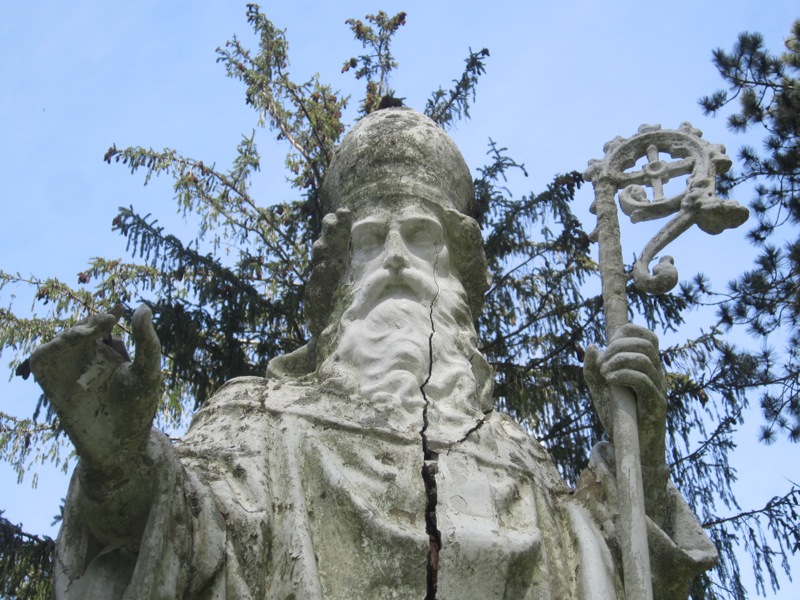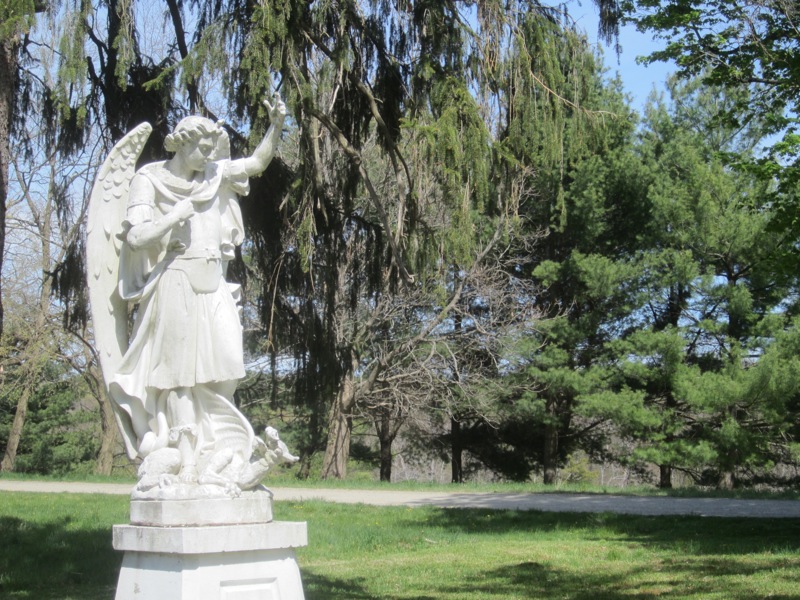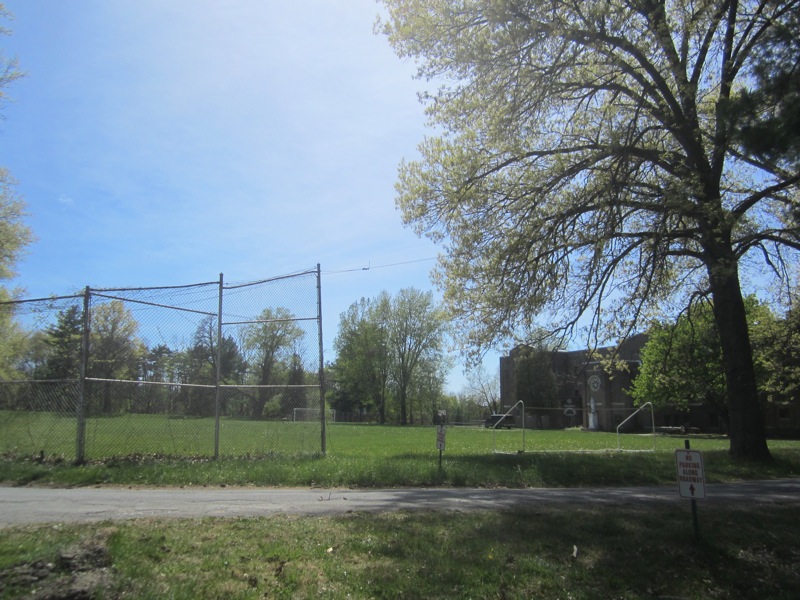A Walk about The Unification Theological Seminary.
I love exploring new places by foot. Luckily for me the Hudson Valley has an overabundance of beautiful walks to choose from. Easy or challenging, through forests or former estates, featuring romantic landscapes, painting-worthy sunsets, and scenic vistas of the Hudson river and Catskill mountains. Few however, combine these elements with being located on the grounds of a former Jesuit Seminary now owned by the Unification Church. The Father's Trail at the Unification Seminary in Barrytown (part of the Hudson Valley Greenway), is one of my favorite nearby walks and intriguing places to explore in the area.
One of the reasons is the town it is located in. Barrytown is, in my mind, one of the most charming hamlets in the Hudson Valley. Driving south towards the village on River Road from Bard College and Montgomery Place, one passes a variety of nineteenth century stone and wood frame homes, along with a wonderful blue and white stick style Episcopal Church.
Turning right at the four way stop sign, Barrytown is strung along two or three roads, running first gently, then steeply down towards the river. Modest homes, glimpses of great estates, octagonal gatehouses, a charming little greek revival post office, and a small cemetery clinging to the sides of a ravine forged by a rushing creek rushing on its way to the Hudson, all work to produce a very unique, special place. It's definitely wortth exploring by car before or after the walk.
Part of the walk's allure lies in the history of its location, along with the associations and marks left by tits successive owners. The property was originally one of the famous Livingston estates, named Massena (for more on this storied estate and on Barrytown in general, read Cynthia Philip's story about them at this link http://www.abouttown.us/dutchess/articles/summer06/lives.shtml) . The estate's Queen Anne mansion (a replacement for the original which burned in the mid-nineteenth century) outbuildings, fields and forests are mostly intact. The estate was bought by the Jesuits around 1930, who built a massive church/classroom/dorm complex facing the mansion. The institutional buildings, chapels, statuary, and outdoor altars all attest to the Brothers presence here. In 1977 the complex was purchased in turn by the Unification Church, led by the Rev. Sun Myung Moon, who also established a seminary there. Although it appears to be a little underused currently, the Church still maintains the property, making some alterations, but overall giving the impression that they have kept everything that was in place before.
The third, and perhaps most difficult element to describe is the odd psychological impression it leaves on one while there. One drives up past an empty security gatehouse, the huge building complex looming beyond it. Although there are plenty signs of life, lights on, bikes and cars parked here and there, newly mowed lawns and building remodeling projects in progress, one seldom sees many people on the grounds. The huge church/classroom/dormitory facility has always seemed empty when I have entered, despite the doors being open and rooms looking recently used in some cases. You feel like you are on the set of a movie where one day almost everyone simply vanishes, leaving behind a few hardy souls to maintain civilization as we know it (I prefer that scenario over a zombie infestation or apocalyptic pandemic, but those thoughts occasionally enter my mind too).
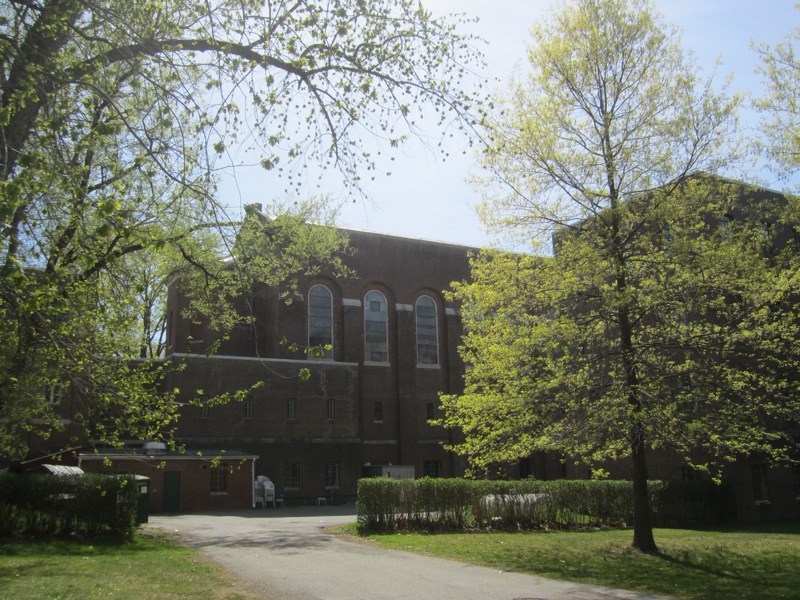
There is the mystery in my mind surrounding the Unification Church as well. Growing up in the 1970's, anything slightly veering off the mainline Catholic and Protestant Church paths was labeled a "Cult". As a child, the "Moonies", selling flowers at airports and taking part in mass weddings in Madison Square Garden, were scarcely distinguishable from the Hare Krishna or Peoples Temple. I was raised to lump of all of them together as a bunch brainwashed zombies (perhaps another reason why the zombie movie scenario flies briefly through my head when entering the place). Although I still do not know much about the Unification Church, it hardly seems to merit the label "cult" rather than "sect" or "denomination".
Whatever the reasons behind it, I go through an odd progression of feelings and sensations while walking through the place, from an initial slight apprehension, to enjoying nature, relaxation, utter calmness, along with intrigue, historical interest, to having many unanswered questions raised by the time I leave.
Back to the walk.
One drives onto the property from Barrytown Road (County Route 82). Slowing down at the modern security check gatehouse, you first get a sense of the enormity of the property, with the mansion and institutional buildings looming in the distance. The gatehouse is always unmanned, so you can drive past and into the parking lot.
The parking area, which could accommodate a hundred vehicles, usually has but a few cars or vans in it. The day I drove in a man was working on a car in the corner of the lot, with his back to me. He neither turned to look, or seemed aware of my driving in. I walked up some steps on the edge of the lot, towards the house and the seminary buildings, but then decided to begin my visit at the well marked trail head across the road. As I crossed over the road, a man driving by in a car slowed down and waved hello. I said hello back, thinking he might ask me what I was doing on the grounds, but he kept driving down the drive, and out onto the main road.
The trail begins as a mowed path in the field skirting the woods along the southern edge of the grounds.

Near the western boundary of the property, the trail turns turns north, taking you into the woods. You begin walking on what feels like an old wagon trail or carriage road. The greenery and sounds of the birds begin to erase any feelings of unease I had. My pace slowed, and I began to enjoy a leisurely walk, surrounded by nature.
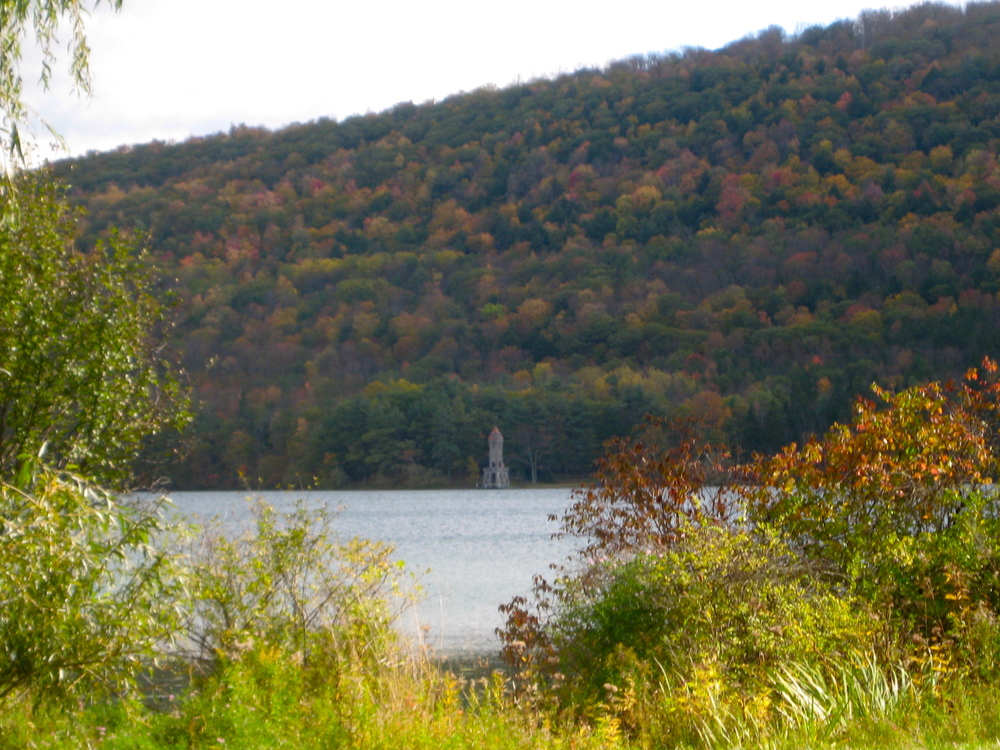
Soon, glimpses of the river could be seen on my left. To the right, occasional openings in the woods revealed views of the mansion across open fields.
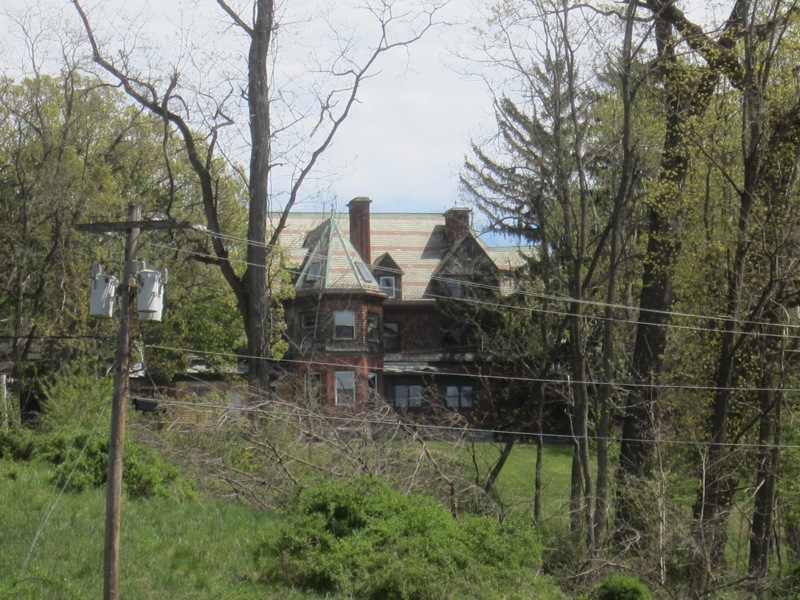
The road began to rise and dip gently. The low areas next to the trail carpeted with florescent green skunk cabbage.
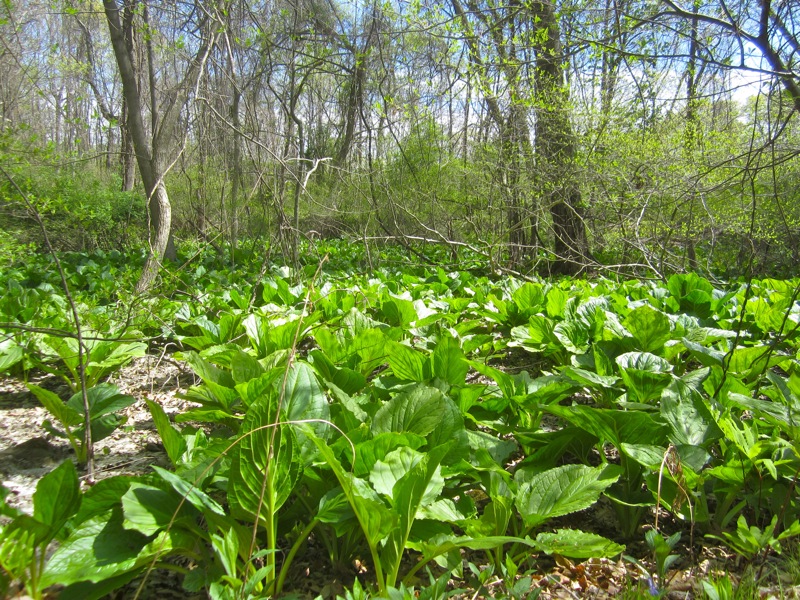
The road ends at a small promontory with a bench, placed to encourage one to stop and enjoy the view of the Tivoli Bays through the trees.
Next to the bench is a large rock with a plaque affixed to it, commemorating a visit by Rev Sun Myung Moon in 1977. Jesus Christ might have been a "fisher of men", but from the inscription on the plaque, it appears the Rev Moon was quite the "fisher of carp", spending many days at this spot making the nets himself, and teaching the seminarians his unique fishing style. I wondered, seeing no current evidence of nets or fishing, if that legacy lives on?
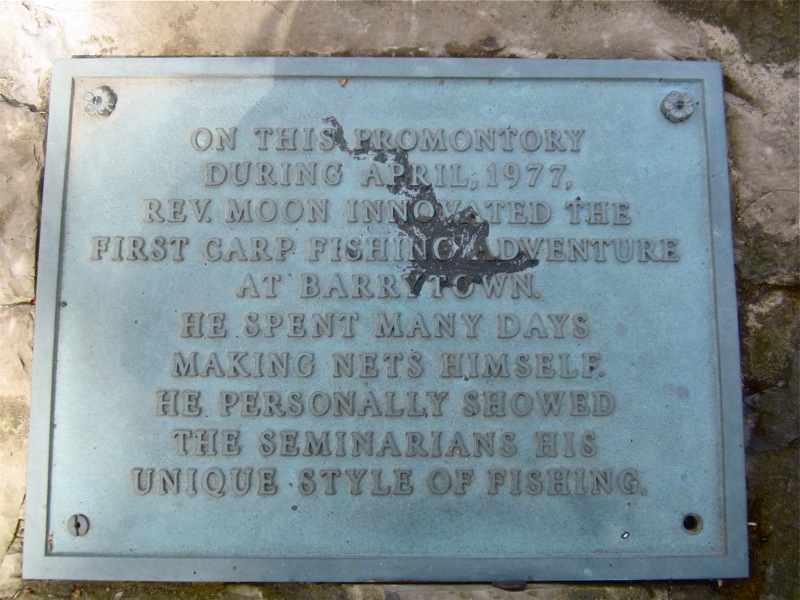
The trail now becomes a footpath, skirting along the south edge of Tivoli Bay, with several places to stop and sit, admiring the scenes created by the Hudson River, train tracks and Catskill Mountains.
Another boulder along the path sports a plaque commemorating the spot where the Rev. Moon spoke before an assembled throng for seven hours, fueld by the barbecued potatoes he ate (no mention of any of carp being consumed).
Looking at the benches ringing the area where he spoke, (which reminded me more of the setting of the apes war council from Planet of the Apes), I hoped that each audience member received a cushion along with their barbecued potato.
The trail then turns south and heads upward, leaving the forest. Emerging from the woods, I noticed an abandoned swimming pool down to my right, which begged for a closer inspection.
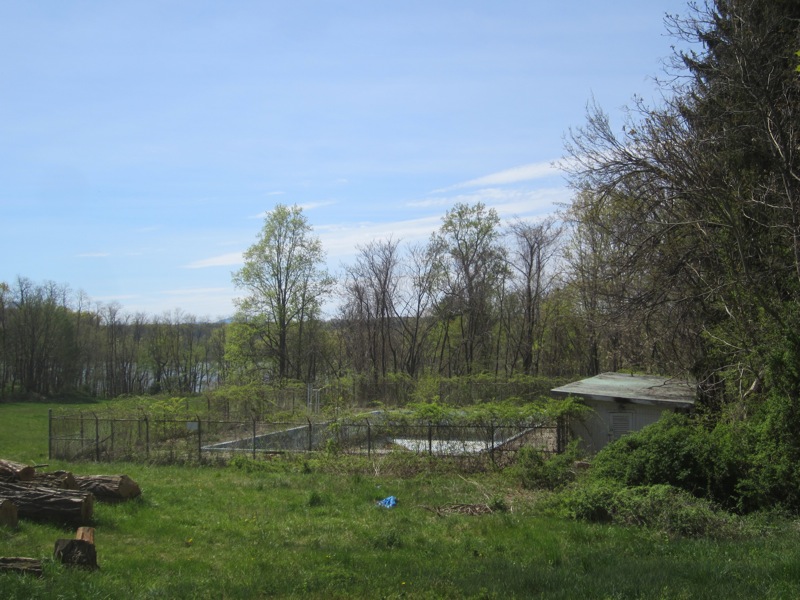
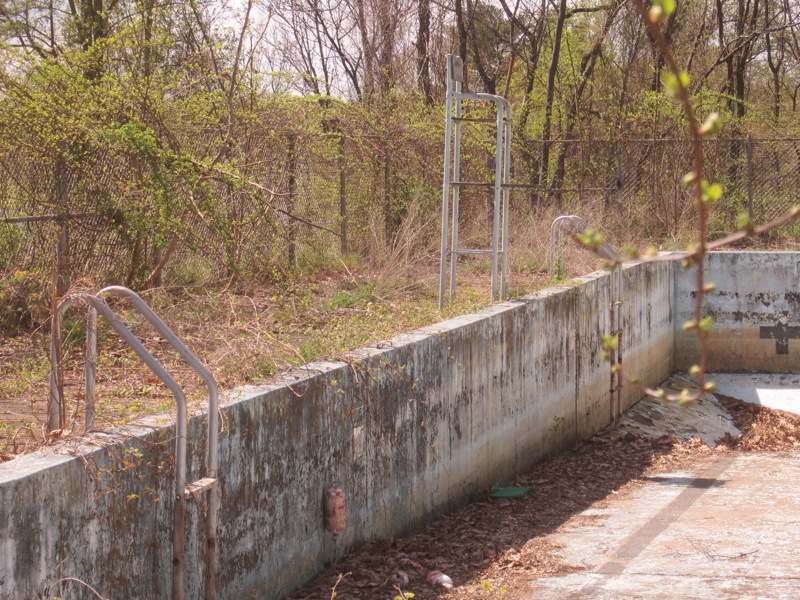
Soon you reach the former farm buildings from the Livingston era. The first I passed was a large chicken house converted to residences, and in the distance, a handsome old Queen Anne style barn.

Looking west, the woods open to reveal fields and the river beyond.
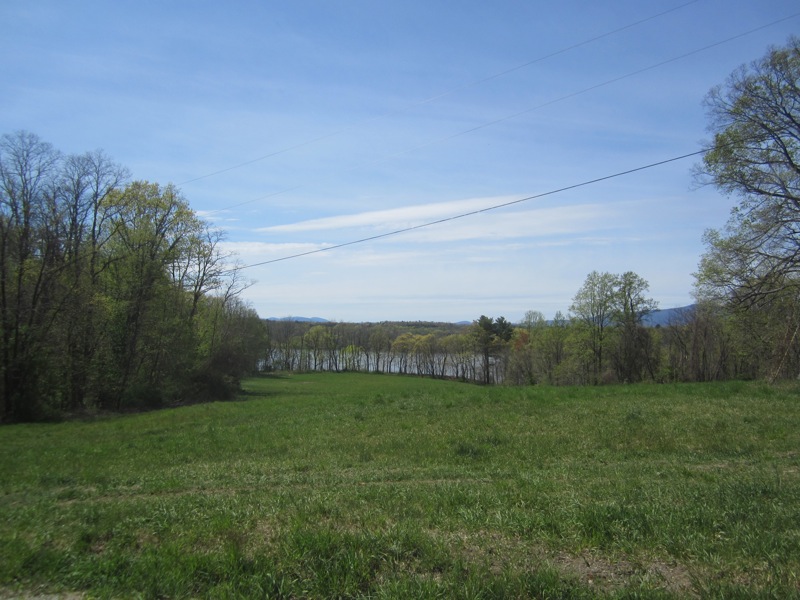
Walking down the farm lane, the main part of the campus appears in the distance.
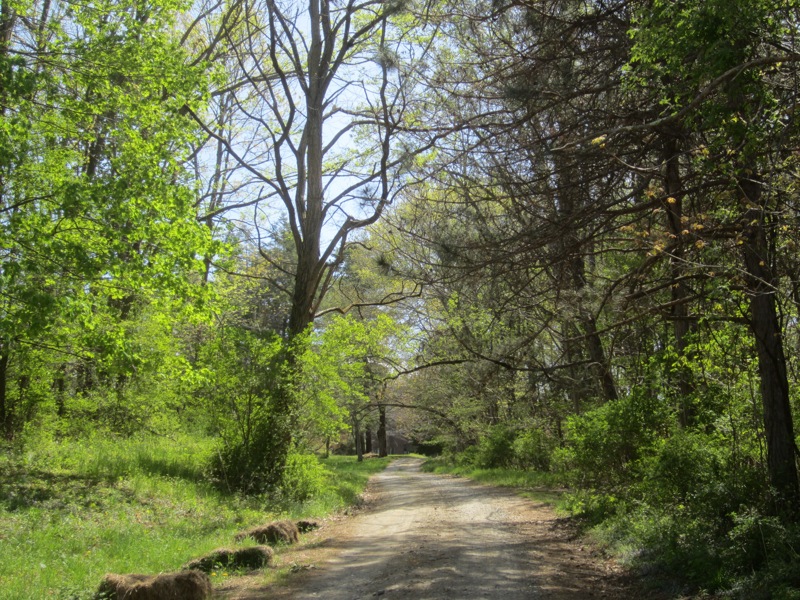
Along the way, there is a sign encouraging one to visit the Peace Sanctuary and Labyrinth. Who doesn't enjoy a good labyrinth? Especially in a peace sanctuary, where the odds of running into an axe-wielding Jack Nicholson seem rather remote. The shaggy forsythia hedge promised a very challenging and beautiful maze.
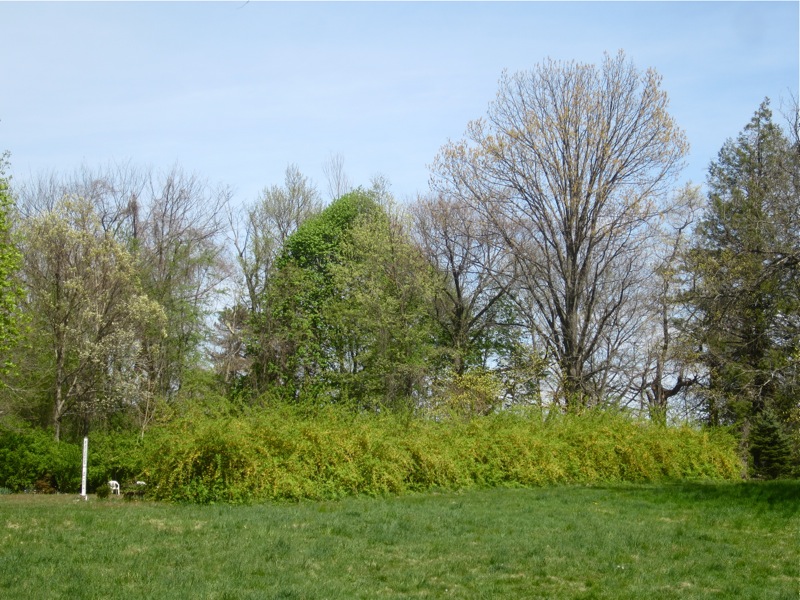
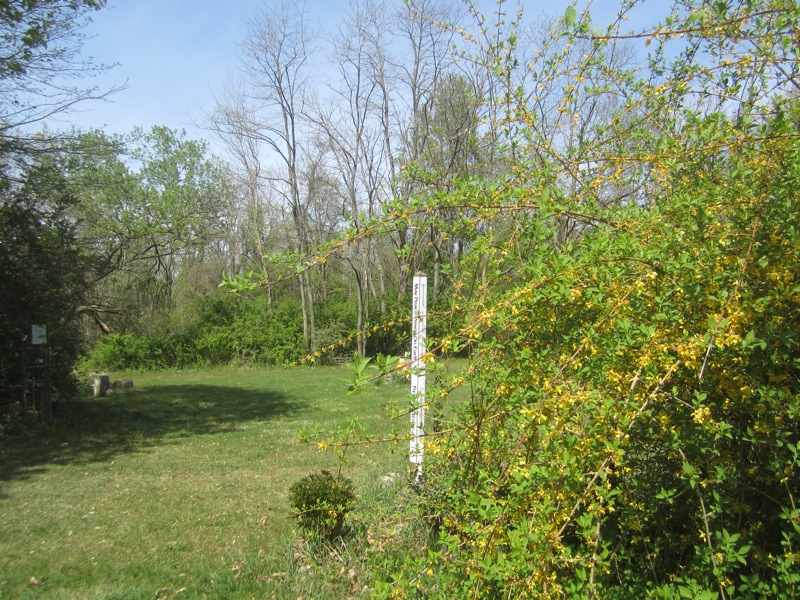
Turning the corner in anticipation, I wondered if i might need some gps guidance, and checked that I had cell reception in case I needed help finding my way out.
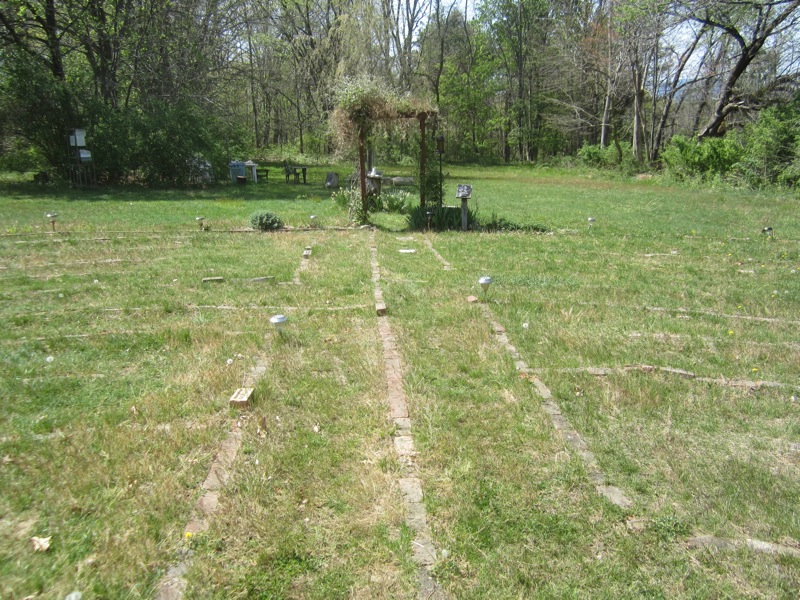
It turns out I didn't, the labyrinth consiting of bricks laid in the ground. This turned out to by my only disappointment on the walk. Although the buddhas sitting by the stump in the middle did seem peaceful.

The walk is full of surprises, and it is very worthwhile to meander off the main path every now and again. I noticed the back side of this stone structure on a hillock to my right.

Which revealed itself to be a grotto erected in the 1930s, complete with a disused altar.
A walk through an old rock garden leads you to the backside of a small log cabin.
Luckily the door was locked, discouraging a peek inside to discover Jason or his mother from Friday the 13th in residence.
Coming back up upon the main building , I took a left turn down the road running along side it.
The wings of the building complex wings stretch back on the right. Along the left side of the road, a few statues stand amongst the pines, including A rather foreboding St Patrick.
And St George slaying a a baby dragon - hardly seems like a saint-worthy battle, as he doesn't even look like he broke a sweat, but but I am sure he did other good stuff.
Though you have the option of continuing in several directions, towards an old farmhouse and gardens, I turned back, passing the maintained but empty ball fields behind the main building.
Turning the corner around the main building, you come upon the mansion from a different angle. I decided to have a closer look.
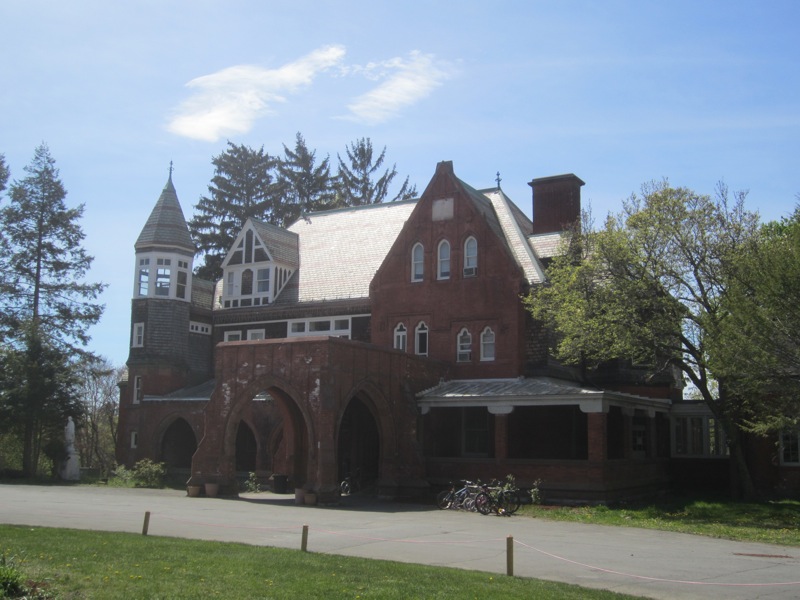
I went under the romanesque porte cochere. Despite the open front door, I kept a respectful distance.
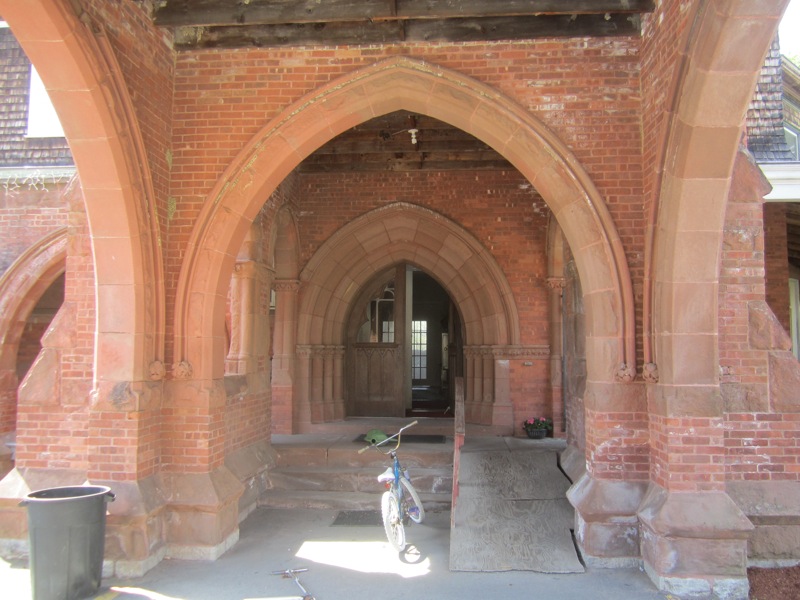
From the mansion I looked back at the massive chapel attached to the classroom buildings. Unlike former visits, the main entrance was shut.
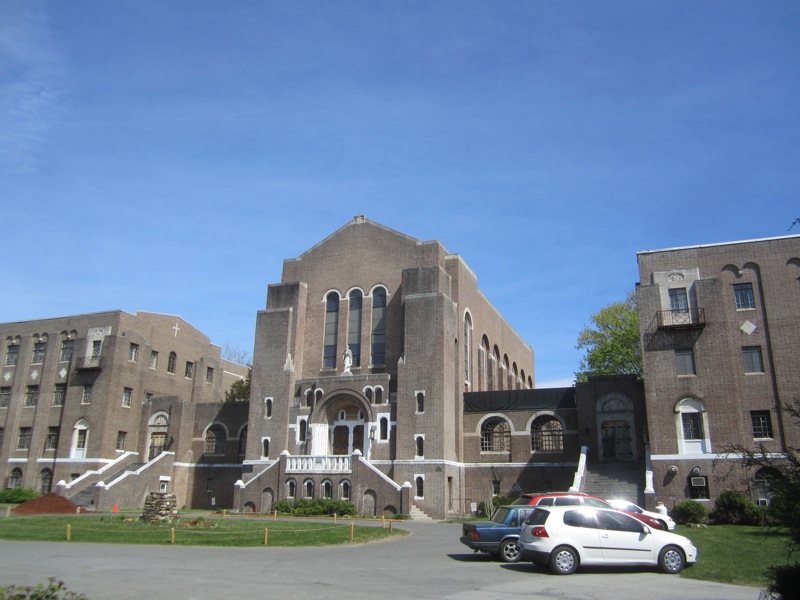
I was again struck by the fact that there were no people walking about, or any sounds of human activity. The cars parked by the building entrance, the open door of the mansion, recently tended gardens and halfway completed construction projects made me feel as if everyone ran and hid when I came. Feeling slightly uneasy again, I went back to my car and drove off, until I return for another walk in another season.
